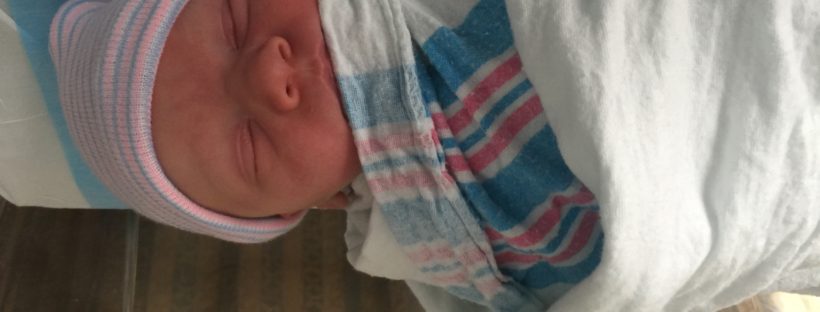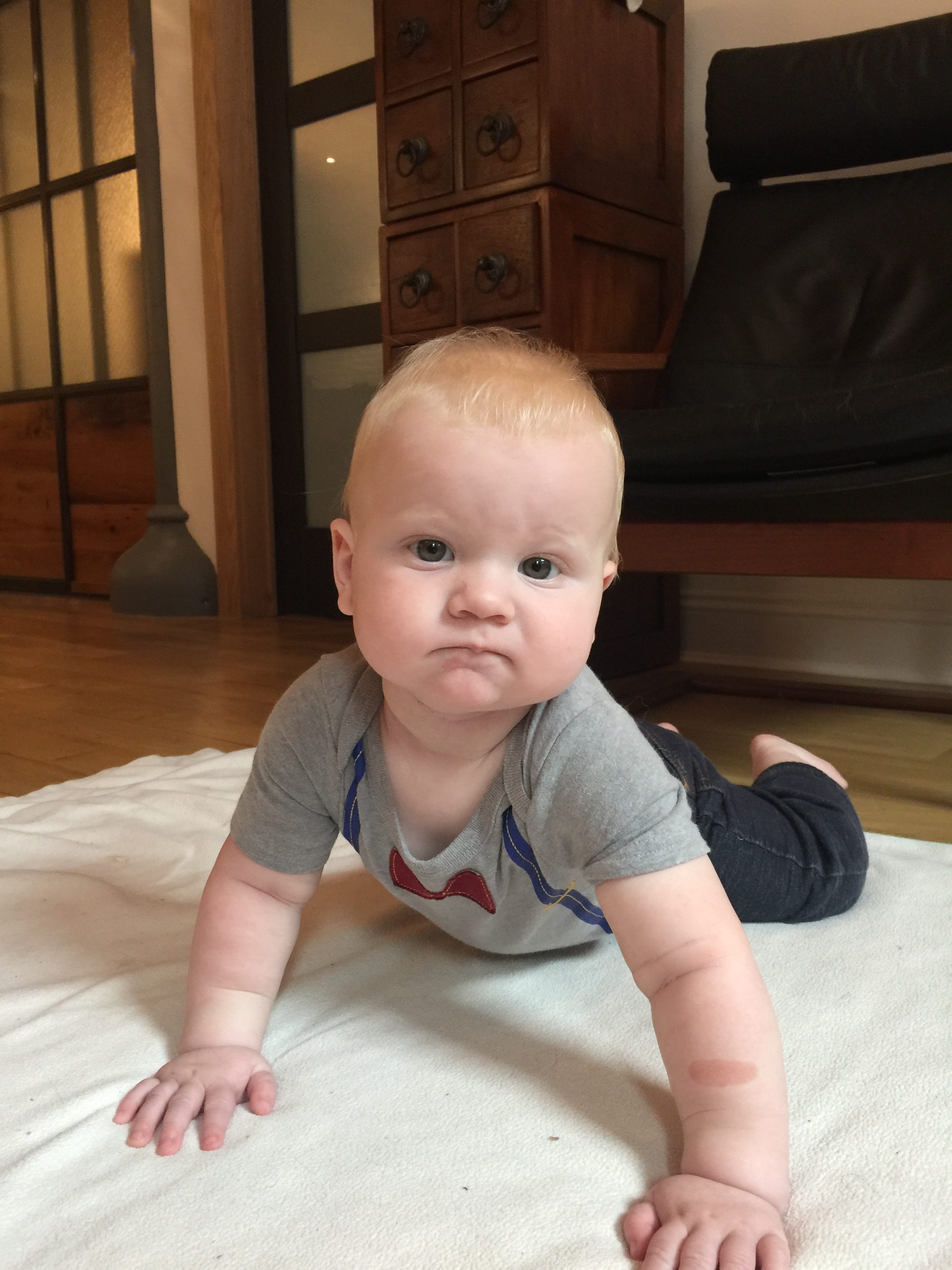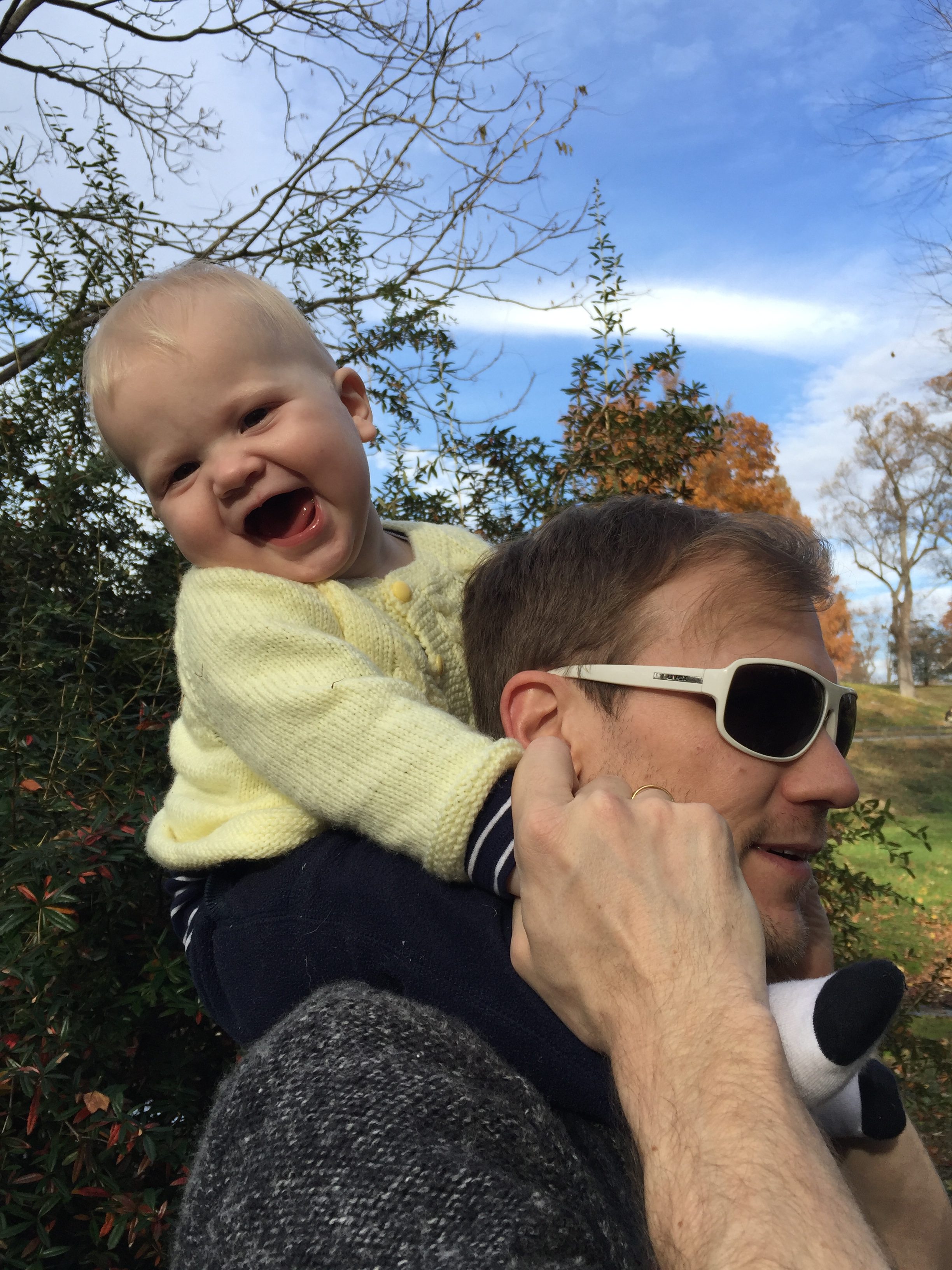By Fed is Best Mom and Advocate, Lilian B.
My son John was born at 42 weeks and one day at Methodist Hospital in Park Slope, Brooklyn, via uneventful vaginal delivery. His APGAR score was 9 or 10. He was strong and beautiful. My labor was quick, and once I got an epidural, it was a breeze. My water broke around 7 pm at home. An hour later contractions began in earnest. Once my midwife told me I was ready to push, it only took 20 minutes to get him out. Once the bliss of easy labor wore off, my hospital nightmare began.
See, I was born with tuberous breasts. This is a breast deformity, characterized by severe hypoplasia (lack of tissue), a narrow breast base, and puffy painful nipples that droop downward, due to a lack of any breast base. It’s a poorly understood and studied deformity, but anecdotally, it can make breastfeeding difficult, if not impossible. On top of the deformity, I had two cosmetic surgeries to correct the appearance of my breasts.
Naturally, I had major anxiety about whether I would or wouldn’t be able to breastfeed.
Day One
Shortly after John was born, I tried to get him to latch, but he wouldn’t latch. He sucked various parts of my chest and fell asleep. He slept soundly from 5 am to almost 2 pm. While he slept, I attended a lactation workshop. When I got back from the lactation workshop, I called one of the lactation consultants to come to my room.
The LC arrived around 2 pm. John was a bit lethargic, and he tried to latch to seemingly anything except my breasts. She showed me how to latch him properly, and he suckled, but to me, it didn’t look like he was swallowing anything. The LC expressed colostrum from my nipples, which really hurt. I think it was all the colostrum I would ever produce… John ate the colostrum from a spoon and fell asleep again.
Around 4 pm, a nurse came in and checked his skin. To my surprise, she said he was jaundiced and may need therapy. I had never heard of baby jaundice. The resident didn’t even ask if he was eating or doing well.
I kept putting baby John on my breasts throughout the afternoon and early evening, and he would suckle away, but again, it didn’t seem like he was really getting anything. I tried to hand express colostrum as the LC had done, but nothing was coming out. He would fall back asleep after 10 minutes of nursing.
My husband and I dozed off. Suddenly we awoke to three people in our darkened room: two residents and a nurse. They announced that John’s bilirubin levels were now in the high-risk zone, and he would be taken away from me and put into a glass box under UV lights. I was so disoriented, I just said OK.
One resident left, and the remaining resident explained to me that I was O Positive and John was A Negative blood type, which resulted in higher levels of bilirubin. I asked if there was anything I could do to help my baby, and the resident explained that the best thing for him was to eat. My heart sank. This is precisely what I can’t do: I explained to the resident my deformity and multiple surgeries, using medical terms. He just replied something about it being possible to breastfeed even after surgery and left.
After the second resident absconded into the night, only the nurse remained. She explained that they would bring John back to me to breastfeed throughout the night. In desperation, I pleaded with her to feed him formula. I explained my surgeries and deformity again, this time in tears. She told me to take a hot shower or use a warm compress on my breasts to stimulate milk production, and she too disappeared into the night.
I remember lying in the hospital cot, despondent and crying. My husband spooned me and cried with me. I remember saying, “They keep telling me to breastfeed, but my breasts aren’t real. They’re basically prosthetic. There’s nothing coming out of them.”
Hours passed and I kept going into the hallway to try to look at baby John. I could see him in the glass box, with a blindfold on. It hurt my soul to think about how confused and alone he must feel.
Later I checked on him again, but this time I could see he was crying. That was the last straw. I called the nurse and demanded they give him formula. She told me that only the chief resident or pediatrician can authorize formula, and he was tied up in an emergency C-section. Are you kidding me, I thought.
Finally, hours later, a 20-something child shows up in my room in the dark. She tells me that the benefits of breastfeeding include lower rates of diabetes, obesity and heart disease, as well as higher IQ. Was I sure that I wanted formula? I told her yes because my baby is alone in a glass box and screaming for food, which apparently he needs to survive. She said OK.
Day 2
Eventually, the sun came up, and I expected to wake up relieved. The morning nurse came in and shattered my relief. She said that she attempted to give John formula but he wouldn’t latch onto the nipples for the bottles they stocked. The nipples were the long skinny kind, and John had a good natural latch. “This baby knows what’s best: breastfeeding” she declared in seeming triumph.
She then proceeded to explain to me that I really should work on feeding him, because he needed to eat to get rid of the bilirubin. It was only then that she explained that high bilirubin levels can lead to brain damage. But I ought not to worry, because her own children looked like Oompa Loompas when they were born and now they’re very intelligent. Oh good, thanks, I thought.
My parents, sister, and brother-in-law came to Brooklyn that day to visit me. They were shocked to find John in a glass box and me sobbing in my hospital room since they heard that yesterday’s birth had been super easy. Yes, the nurses eventually wheeled John’s glass box into my hospital room, because his non-stop screaming was disturbing the other babies in the nurse’s station. This gave me relief in a sense. I played music for him and held his hand. But it was awful to watch him cry.
Thankfully, my sister was lactating at the time, and she breastfed John. She told me his latch was deep, perfect and painless, unlike her own son, who had a tongue tie and a shallow latch. I saw him take big gulps, and when he unlatched there was a dribble of milk down his cheek. I wept tears of joy.
The Fed is Best Foundation supports safe, laboratory-tested donor milk supplemental feeding. Had John’s mother been provided formula when requested, she may not have needed to supplement her son through casual donation.
It was against hospital policy for my sister to feed John, as the morning nurse had told me when I made the mistake of mentioning it. So literally I guarded the door while my sister fed my child to keep him alive. It was freaking nuts.
A lactation consultant came in after visiting hours and showed me how to use a hospital-grade pump, which she wheeled into my room. I pumped and pumped but literally, nothing came out. The LC was able to hand express a few watery drops of milk from my breasts, and she declared that they were so “full and healthy-looking. Surely your milk would come in.” Again, I explained my deformity and surgeries. She asked me what my surgeons had told me, and I said they weren’t sure what my outcome would be, but it was theoretically possible to breastfeed.
My sister had hand pumped another 2 oz or so and left it in the hospital room for us before she went home. Later that evening, when my baby woke up hungry, I pipette fed him the breast milk. Unsurprisingly, his bilirubin levels dropped significantly since he had finally eaten, and they told me that I would likely be released the next day. I only had 2 oz of breast milk for the night. Once it was gone, I had no plan.
Day 3
The next morning, the nurse announced that John’s bilirubin levels had inched up again, but since he was a day older, he was technically out of the danger zone. She encouraged me to keep breastfeeding and told me we would be OK. Throughout that day, I kept pumping and getting nothing. The LC kept telling me, “Pumps don’t work for some moms. The best pump in the world is a baby!”
I kept putting him at my breast, and I could tell that he was suckling but not gulping, as he had done at my sister’s breast. I pipette fed him formula while he suckled. He still refused to latch onto the formula bottle nipple. I left the hospital feeling as if I was stepping into a void, where nobody would hear me cry.
The third night was restless. John kept waking up crying. I didn’t have formula at home, so I was just putting him on my breasts. He would suckle and fall asleep after 10 minutes. An hour later the same thing would happen.
Day 4
In the morning, I was overjoyed to see the pee strip on his diaper had changed colors! He must have gotten some milk and peed! But when my husband and I removed the diaper, we saw that the urine looked like it was slightly bloody. My husband googled it, and found “brick dust” indicates severe dehydration.
I panicked. I told my husband to go out and buy formula. ANY formula. ANY bottle. Because of jaundice, we had our first pediatrician appointment that morning. When his pediatrician came into our exam room, she found me frantically squirting formula into John’s mouth, since he wouldn’t latch onto that nipple. He was sort of gagging on it, swallowing some, and the rest was spilling all over him but I didn’t care.
Thankfully, my pediatrician just seemed grateful that we would be switching to formula. She told us to research anatomical bottles, that John might have better luck with a different type of nipple. Until then, I had no idea that baby bottles came in different nipple formats. I’d always thought of them as universal.
He latched right on, guzzled formula as heartily as he could, and then unlatched. He burped like a trucker, with a stream of milk dribbling down his chin. He looked happy like he had when my sister fed him. He went right to sleep and stayed asleep for hours. The jaundice faded in a day and a half. John had lost 10% of his weight, but he put it right back on in the first week. He was super cute, alert, and clearly thriving.
Phototherapy-requiring jaundice as well as infant hunger and dehydration are improved with ad-lib supplementation.
Still, I wouldn’t let the guilt leave me. I spent weeks taking supplements and pumping. The most I ever got was one ounce A DAY, which I dutifully fed him. I paid for a consultation with a lactation doctor, who helped me buy domperidone. As soon as I started to take the domperidone, I got a horrible headache and much of my visual field became watery and blurry. By then my husband was back at work, and it was just really scary not to be able to see, so I gave up on it immediately. I returned to the hospital grade pump I rented. And I never looked back.
Since giving up on breastfeeding, I started to look at some of the studies that supposedly validate the benefits of breastfeeding. I was shocked by how few studies had any adequate controls for class and socioeconomic status. I am upper middle class and privileged, as are many of my friends. Some of them are downright rich. Their mothers all formula-fed in the ’80s, and yet, none of my friends are obese, dull, or have diabetes. I began to seriously doubt the data that is out there.
As a philosophy major, I am accustomed to analyzing magical thinking, that is, thinking that is not supported by the evidence. The vain hope behind much of the magical thinking that I see is a desire to return to nature. Nature is best. Nature is right. Nature is true. And if we stop being artificial, we as humans will be better off. Biological systems work, BUT they are not necessarily efficient or good.
If your baby is hungry, feed her. And if other moms guilt you, remember that they are scared and alone too.
#FedisBest
— Lilian B.
Here’s John now!
There are many ways you can support the mission of the Fed is Best Foundation. Please consider contributing in the following ways:
- Join the Fed is Best Volunteer group to help us reach Obstetric Health Providers
- Make a donation to the Fed is Best Foundation.We do not accept donations from breast- or formula-feeding companies and 100% of your donations go toward these operational costs. All the work of the Foundation is achieved via the pro bono and volunteer work of its supporters.
- Share the stories and the message of the Fed is Best Foundation through word-of-mouth, by posting on your social media page and by sending our resources to expectant moms that you know. Share the Fed is Best campaign letter with everyone you know.
- Write a letter to your health providers and hospitals about the Fed is Best Foundation. Write them about feeding complications your child may have experienced.
- Print out our letter to obstetric providers and mail them to your local obstetricians, midwives, family practitioners who provide obstetric care and hospitals.
- Write your local elected officials about what is happening to newborn babies in hospitals and ask for legal protection of newborn babies from underfeeding and of mother’s rights to honest informed consent on the risks of insufficient feeding of breastfed babies.
- Send us your stories. Share with us your successes, your struggles and every thing in between. Every story saves another child from experiencing the same and teaches another mom how to safely feed her baby. Every voice contributes to change.
- Send us messages of support. We work every single day to make infant feeding safe and supportive of every mother and child. Your messages of support keep us all going.
- Shop and Fed is Best Foundation will earn cash back! We hope to develop our online safe infant feeding classes with these funds.
- If you need support, we have a private support group – Join
We believe all babies deserve to be protected from hunger and thirst every single day of their life and we believe that education on Safe Infant Feeding should be free. If you would like to make a donation to support the Fed is Best Foundation’s mission to teach every parent Safe Infant Feeding, please consider making a one-time or recurring donation to our organization.





